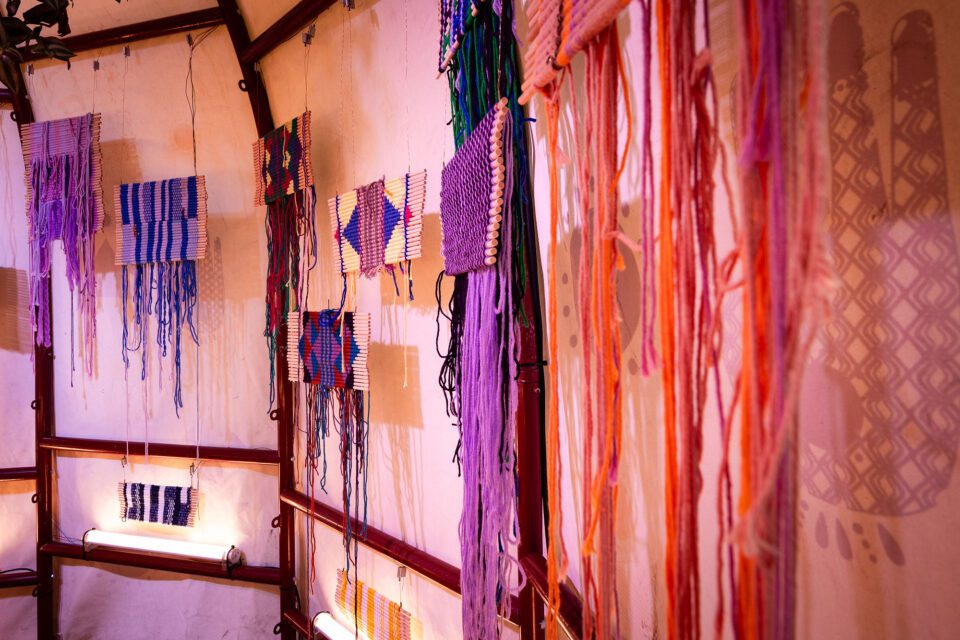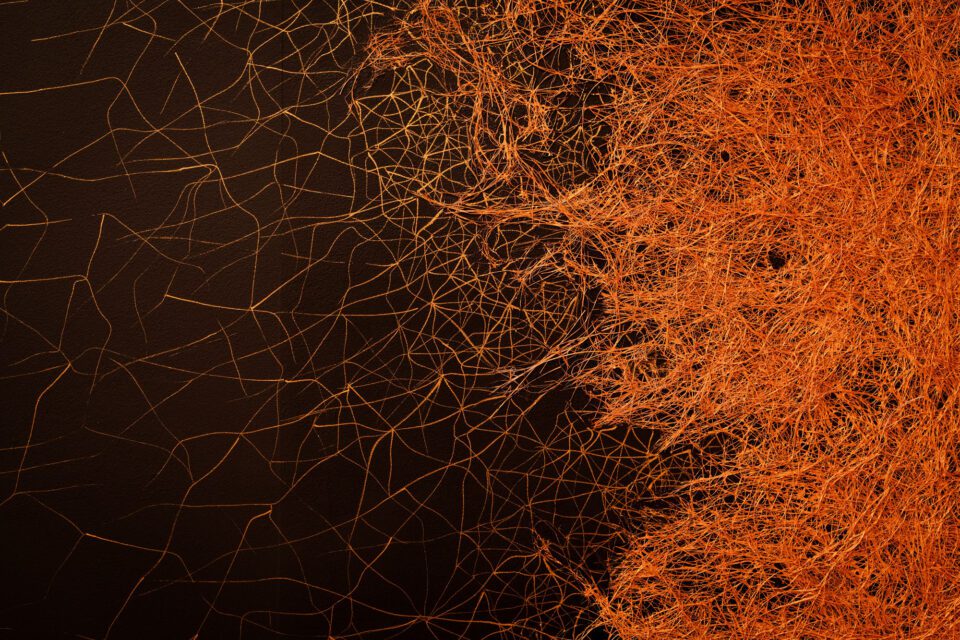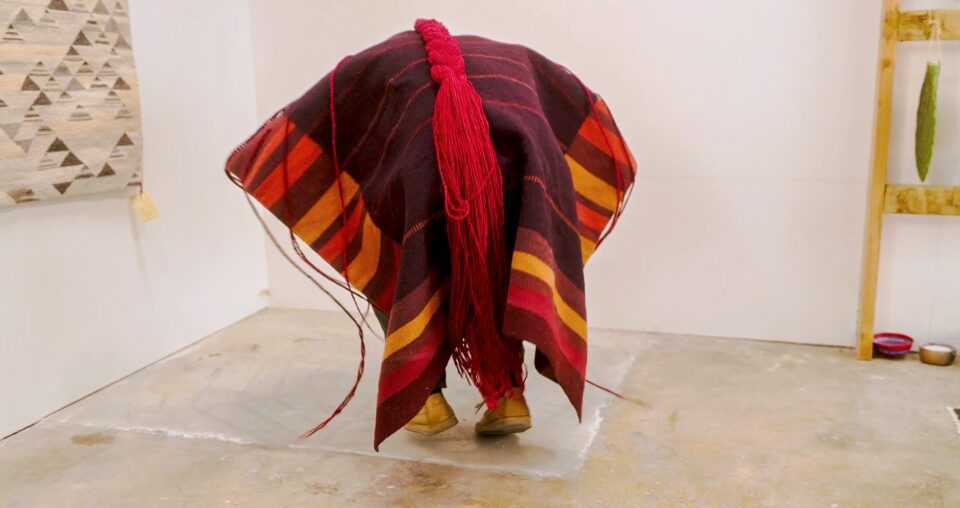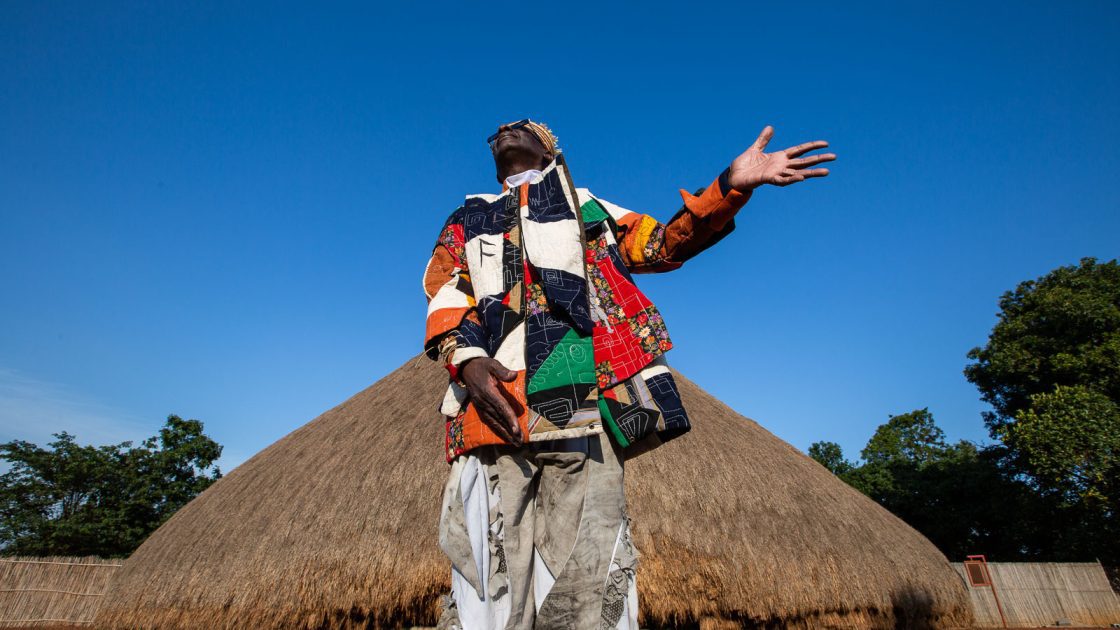The North of England is a hub of creativity. In recent years, events and galleries have established themselves as destinations outside of the capital. This summer, Liverpool Biennial, the UK’s largest free festival of contemporary visual art, featured artworks, installations and films across 18 locations. Meanwhile, Bradford’s designation as the 2025 City of Culture has seen the arts merge with civic life in unprecedented ways, transforming the very foundations of the Yorkshire city. Now, October heralds the launch of British Textile Biennial 2025 – another important voice in this Northern cultural movement. Its programme is firmly rooted in Lancashire’s landscape, showcasing more than 50 artists and collectives in venues across the county – including former factories and Blackburn Cathedral’s crypt. This year’s theme, “The Future Was Always There”, honours the innovation of 20th century pioneers alongside today’s practitioners, who are revolutionising textile-making amid climate change and technological development.

The Biennial spotlights three major, headline shows, all of which come together to celebrate invention and innovation in textile production. The Synthetic Revolution spotlights the wartime invention of polyester in an Accrington laboratory, a discovery of global significance. The exhibition explores the origins of this story, tracing it back to 1941 and throughout the Cold War, when it became a crucial technology for Cold War competition and conflict, before considering it in the context of today’s fashion industry. Pioneers of the Material World is another major moment at this year’s Biennial. It marks the 50th anniversary of the 1975 British Mount Everest Southwest Face expedition, charting Lancashire’s role in producing “performance clothing,” which emerged for survival in the most extreme environments. Meanwhile, internationally renowned artist and designer Aitor Throup closes the month-long festival in style. This immersive multi-media event offers visitors a chance to experience and explore Throup’s genre-defying work, highlighting how his beginnings in Burnley inspired him towards an endless path of exploration and innovation. The retrospective features his iconic designs from the reimagined C.P. Company Goggle Jacket to his costumes for the Hunger Games and Ash sci-fi films as well as his latest collaboration with Umbro, that is set to rewrite the design rulebook not only in football, but the world of performance apparel.

Lancashire’s manufacturing history is the heartbeat of this event. 150 years ago, the region’s mills employed 440,000 people and produced half of the world’s cotton. By 1900, output had reached eight billion yards of cloth annually. One of the exhibiting artists, Sally Hirst, presents work at Helmshore Mill, built in 1796. Her fabric installation navigates histories of disability within mill communities and the Luddite movement – a group of 19th century workers who opposed certain types of machinery due to potential impacts on pay and output quality. Hirst draws a parallel between this early resistance to technology and today’s complex conversations around AI. Also featured is Anna Clough’s Fold Anew, an outdoor sculpture based on the traditional sheep fold, which celebrates Lancashire’s farming and fleece legacies. The work is made using local methods – dry stone walling and cob clay (a mixture of soil, sand, water, hay and wool) – and it reveals how traditional forms of production might shape more sustainable ways of making.

The region’s textile legacy is shaping design’s future, and this is something the Bienniale makes abundantly clear. The Centre for Sustainable Fashion, for example, presents a fascinating collaboration with farmers. Their project, which focuses on fibre production and biodiversity enhancement, uncovers the potential of landscape-specific grazing with native and rare-breed sheep. It is a testament to the power of looking for inspiration locally, considering how long-used techniques can be revisited for the modern era. Likewise, Ivan Forde’s Eternal Seas sees the artist work with Bionic Yard, a company which repurposes plastic waste from coastal communities and marine ecosystems to create high-performance textiles. It is a practice that foregrounds sustainability and recycling. He then uses this material to create intricate tapestries that depict both fictional and real bodies of water. Together, these practitioners position the North as more than a site of industrial memory, instead foregrounding it as a blueprint for design innovation. Meanwhile, Mehrotra’s site-specific installation celebrates mycelium networks that are the circulatory systems of earth. Found in the soil, mycelia are not only intelligent parts of ecosystems of landscape, but also are potentially revolutionary material of the future, offering a range of sustainable solutions in manufacturing.

The climate crisis is another major throughline. Fabric production is estimated to be responsible for about 20% of global clean water pollution, mainly from the dyeing process. According to the UN Environment Programme, the industry accounts for 10% of greenhouse gas emissions. British Textile Biennial brings these issues into view, foregrounding pioneering artists who envision more ethical and sustainable processes. A standout example comes from the University of Central Lancashire’s Fashion Promotion students. Their speculative project, Fashion Evolution: 2075, imagines how contemporary brands might connect with consumers fifty years from now. It invites audiences to question how we balance the environmental crisis with our ever-present desire for newness and creative expression. Similarly, IGC Fashion and Salford Slow Fashion’s Woven Worlds, harnesses traditional techniques to help achieve sustainability. They created a distinctive fashion collection that celebrates bark cloth, made from cotton naturally dyed using bark cloth and rust sourced from the infrastructure of historic Lancashire cotton mills. Elsewhere, artists Melanie Smith and Patricio Villarreal offer a different perspective, asking what will be lost if we do not change our behaviours. They present a film documenting time spent with a Mixtec community in Oaxaca, Mexico. The pair followed an age-old seasonal ritual: elderly villagers travel to the coast to find the tixinda, an elusive purple sea snail, and gently “milk” its extraordinary dye without causing harm. The project is an elegy to this act. It comes at a moment when this ancestral knowledge, and the snail itself, are both facing extinction due to pressure from tourism and climate change.
British Textile Biennial is a tapestry of past and present, local and global. It celebrates Lancashire’s history, whilst providing a vision of a more sustainable future. Here, innovation does not mean a separation from tradition but a continuation of it, reshaped to meet the challenges of our time. Artists and communities come together, offering a reflection on where we’ve come from and a vision of where we might go next.
British Textile Biennial runs until 2 November: britishtextilebiennial.co.uk
Words: Emma Jacob
Image Credits:
1. IGC Fashion and Salford Slow Fashion, Woven Worlds. Photo: Mukisa Kibuuka.
2. Dhara Mehrotra, Filamentous, The Whitaker 25. Photo: Matt Savage.
3. Dhaqan Collective, The Aqal, Blakey Moor 25. Photo: Matt Savage.
4. Sairo, Fashion Evolution: 2075. Photo: Sairo.
5. Porfirio Gutiérrez, Untitled, Photo. Courtesy of the artist.





